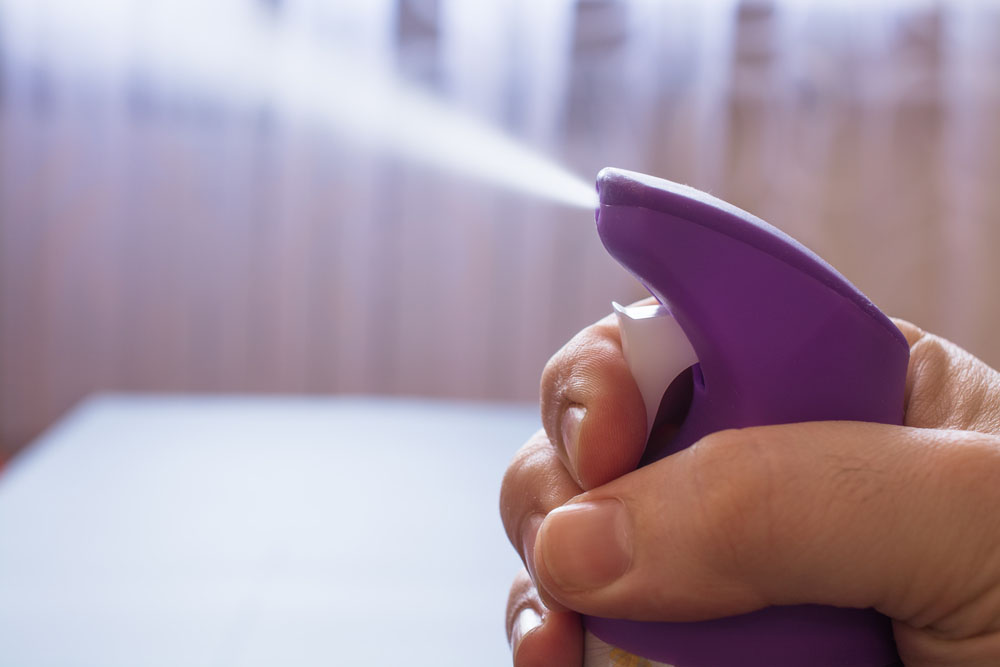When you think of air pollution you probably picture factory chimneys spewing out toxic fumes or black smoke emitted from an old truck’s exhaust.
But have you ever thought about the pollution generated by the everyday fragrances found in your home?
Well, University of Melbourne researcher Professor Anne Steinemann found that one-third of Australians report health problems when they are exposed to common fragranced products.
The most common problems were breathing difficulties, sneezing, watery eyes and migraines but symptoms also included dizziness, rashes, congestion, seizures, chest pain and nausea.
Before we tell you more about the research, let’s look at what actually constitutes a ‘fragranced product’, because we’re not just talking about your favourite perfume or cologne.
Here are some examples of fragranced products that are found in many homes:
- Air fresheners
- Spray deodorants
- Soaps
- Hand sanitizer
- Lotions (including sunscreen)
- Shampoo
- Cleaning supplies
- Dishwashing liquid
- Laundry detergent
- Scented candles
- Toilet paper
- Rubbish bags
- Baby products.
Now, back to the survey results.
Professor Steinemann’s research, which was published in the journal Preventive Medicine Reports, found 33 per cent of Australians suffered adverse health effects after being exposed to fragrances.
And it’s not just an Australian problem.
Professor Steinemann has conducted similar research in the United States which yielded a very similar result, with 34.7 per cent of people reporting health problems when exposed to fragrances.
So should we stop using fragranced products in public spaces?
Professor Steinemann thinks it should definitely be considered.
She described the resulting health problems as an “epidemic”.
“Fragranced products are creating health problems across Australia,” she said.
“The effects can be immediate, severe and potentially disabling, but they can also be subtle, and people may not realise they’re being affected.”
The research – which used a nationally representative population survey of 1098 people – also found that the issue impacts on the economy.
The findings found 7.7 per cent of Australians have lost workdays or even lost a job in the past year due to an illness caused by exposure to a fragranced product.
Also, 16.7 per cent of people report wanting to leave a shop or business as quickly as possible when they smell air fresheners or other fragrances.
“These findings have serious implications for businesses, workplaces, care facilities, schools, homes and other places – for anywhere or anyone that uses fragranced products,” Professor Steinemann said.
“As my study found, about twice as many Australians would prefer that workplaces, health care facilities and professionals, hotels, and airplanes were fragrance-free rather than fragranced.”
How do we find out which products are fragranced?
Professor Steinemann’s previous research showed that while fragranced products emit a range of chemicals, including hazardous air pollutants, the ingredients don’t need to be fully disclosed on the label.
Air fresheners, cleaning supplies, laundry products, and other consumer products are not required to list fragrances in the ingredients.
Personal care products and cosmetics are subject to slightly different rules. They are required to list all ingredients on the label but they can use the general term “fragrance” instead of listing each individual ingredient that makes up the scent.
“All types of fragranced products tested – even those with claims of ‘green,’ ‘organic,’ and ‘all-natural’ – emitted hazardous air pollutants,” Professor Steinemann said.
She now plans to do more research to find out why fragrance chemicals are causing health problems, and what it might mean for indoor environments.





